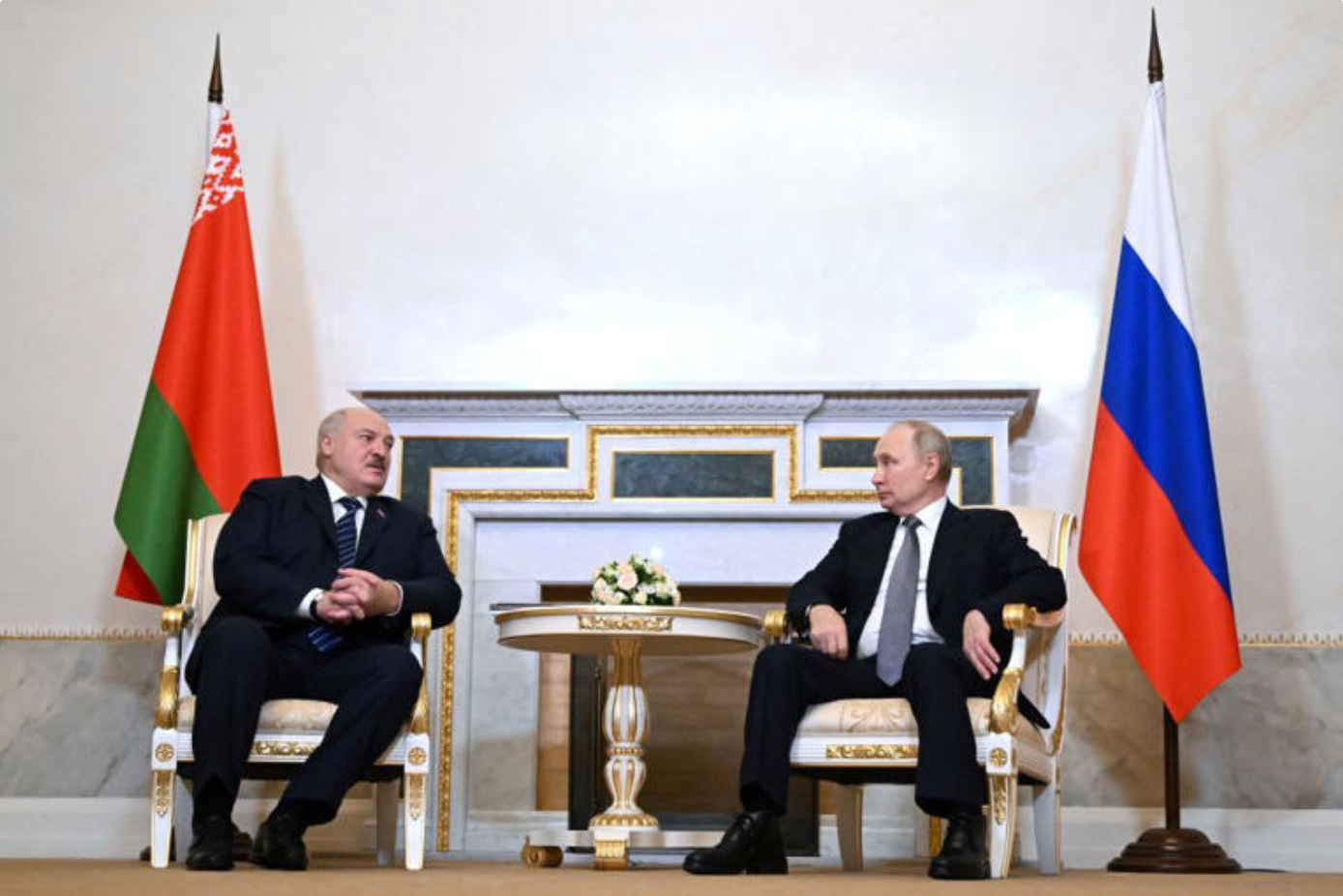In the wake of a Ukrainian incursion in Russia’s Kursk Oblast, Belarusian dictator Alexander Lukashenko began to move his country’s Armed Forces closer to Ukraine’s borders.
And Ukrainian officials began to pay attention to those movements.
Ukraine’s Foreign Ministry warned that Belarus is “concentrating a significant number of personnel” and weapons along Ukraine’s northern border, citing information gathered by the country’s intelligence sources.
Most experts, citing open-source intelligence, have labeled Lukashenko’s recent statements as “information noise” aimed at demonstrating his loyalty to Moscow. But the increasing activity near the border highlights Lukashenko’s increasingly precarious position amid Russia’s war against Ukraine, as he seeks to assert his relevance while avoiding deeper involvement in the conflict.
Lukashenko’s posture with respect to Ukraine shifted briefly in July.
After a series of escalations, he ordered the withdrawal of Belarusian military reinforcements from the border, sparking outrage from pro-war Russian bloggers. However, this de-escalation was soon overshadowed by multiple incursions of Russian drones into Belarusian airspace, which went unaddressed by Belarusian authorities.
Ukraine’s incursion into Russian territory opens up avenues for Belarus to become more deeply involved in Russia’s war efforts through mechanisms of the Russia-led Collective Security Treaty Organization (CSTO) and the Union State between Russia and Belarus.
Belarus is expected to continue supporting Russia through its military-industrial complex, supplying essential components for the Russian war effort. Nevertheless, experts say that it is still unlikely that Belarusian troops will become involved in the conflict at any point.
To maintain his grip on power in the upcoming 2025 presidential elections and restore his legitimacy, analysts say Lukashenko is balancing support for Russia with the efforts to reopen some lost diplomatic avenues with the West.
Subscribe to the Newsletter Belarus Weekly
Lukashenko’s gamble
The Belarusian authorities remained silent about Ukraine’s incursion into Russia’s Kursk Oblast for some time. However, Lukashenko made the claim that Belarus had downed over a dozen Ukrainian drones in Belarusian airspace that had been on their way to strike targets in Russia.
The claim was promptlyrefuted as “nonsense” by Belarusian Hajun, an open-source intelligence project. Yet it sparked a series of actions from the Belarusian authorities.
The Belarusian Foreign Ministry summoned diplomats from the European Union and Ukraine and addressed both the United Nations and the Organization for Security and Cooperation in Europe regarding the alleged incursion.
On the same day, Belarusian Defense Minister Viktor Khreninannounced that Lukashenko ordered an increase in the military presence in Belarus’ southern Homel and Mazyr regions “to respond to possible provocations.” A week later, on Aug. 19, Maj. Gen. Andrey Lukyanovich, the commander of Belarus’ Air Forces, reported the movement of equipment and troops to the border.
In response, Ukrainian Foreign Ministry spokesman Heorhiy Tykhiydismissed the allegations.
RFE/RL Belarusian service political analyst Valer Karbalevich described Lukashenko’s claims as “information noise.”
“It was an artificially created demonstration of allegiance to Moscow, as if to say, we (the Belarusian army) are holding the front here,” Karbalevich explained.
Still, any emergency akin to the Kursk incursion suggests increased risks for Belarus, suggests political analyst Alexander Friedman.
“There is always a possibility that Belarusian resources could be used by the Russians to patch up any gaps in their strategy,” Friedman said.
“It’s not necessarily about deploying the Belarusian army into Kursk; it could involve provocations against Ukraine on the Belarusian border. Given the potential for such situations, Lukashenko may feel compelled to imitate significant activity, despite the absence of any real threat.”
